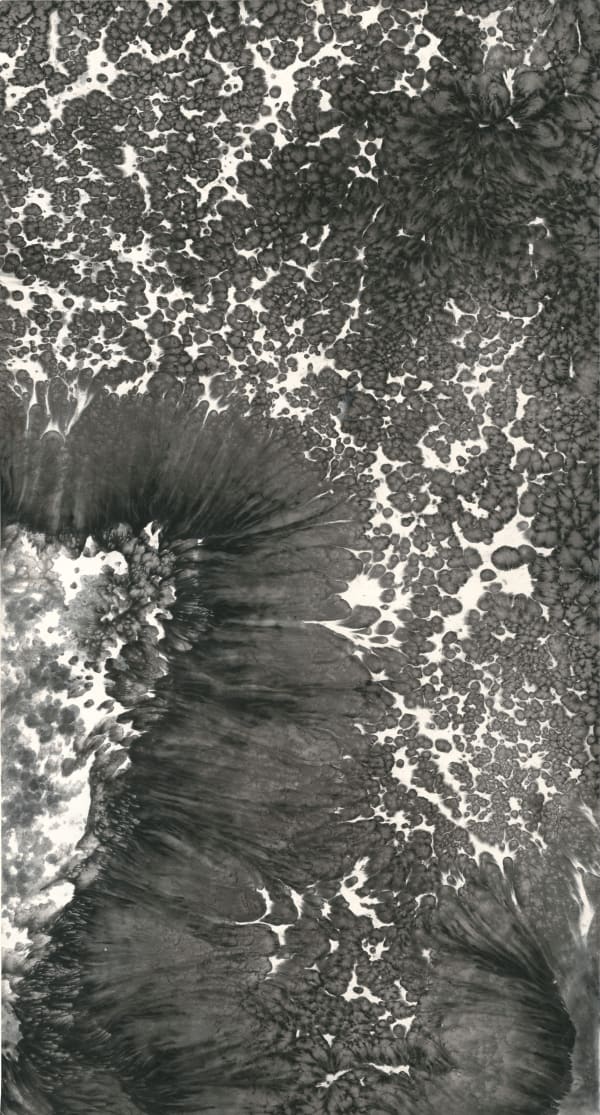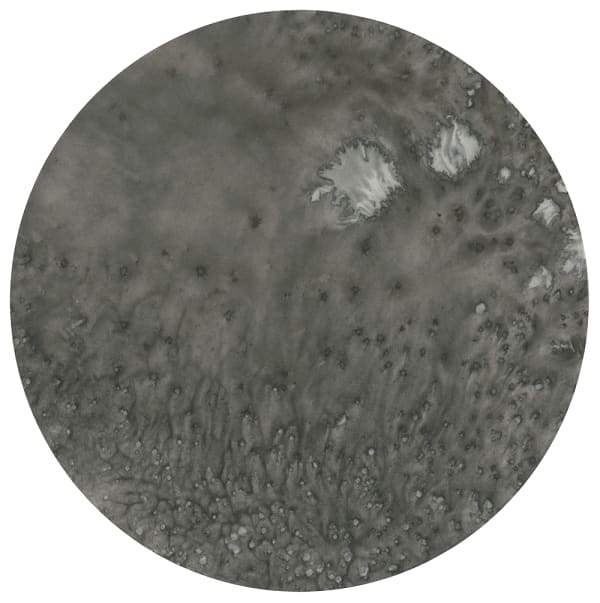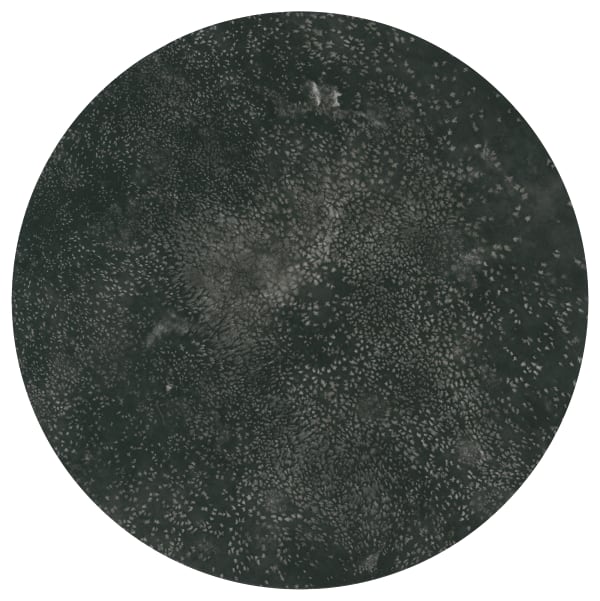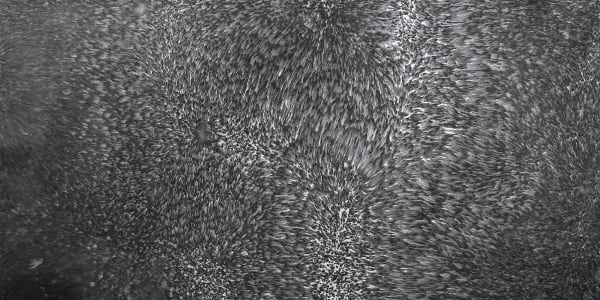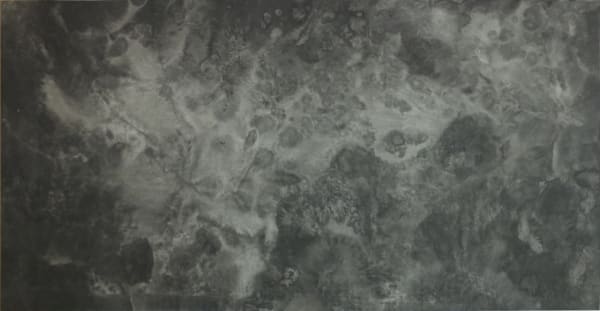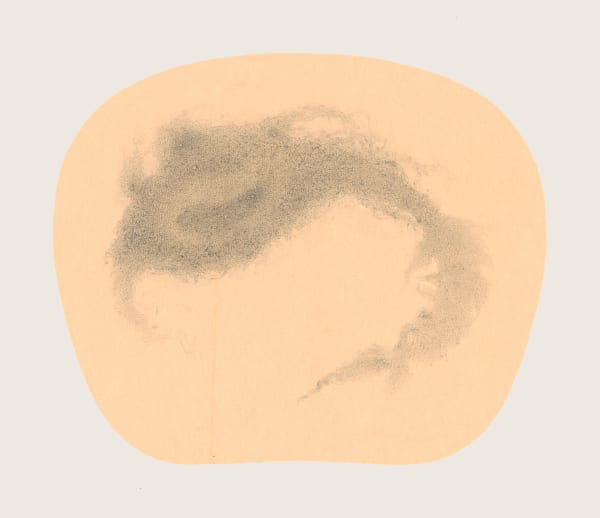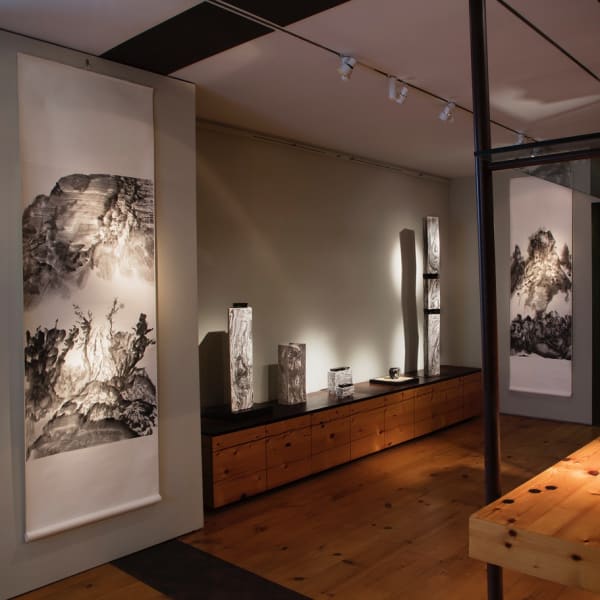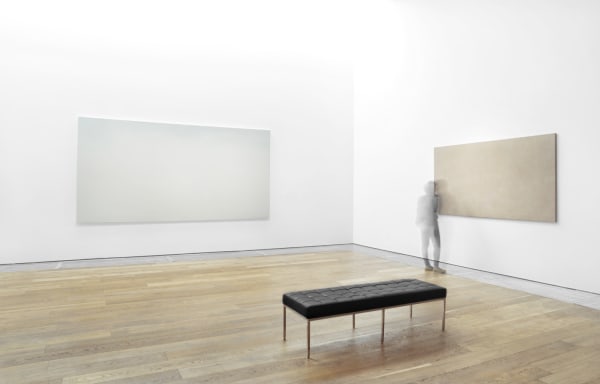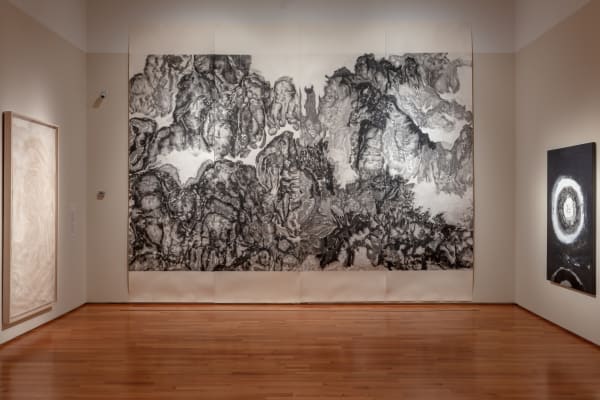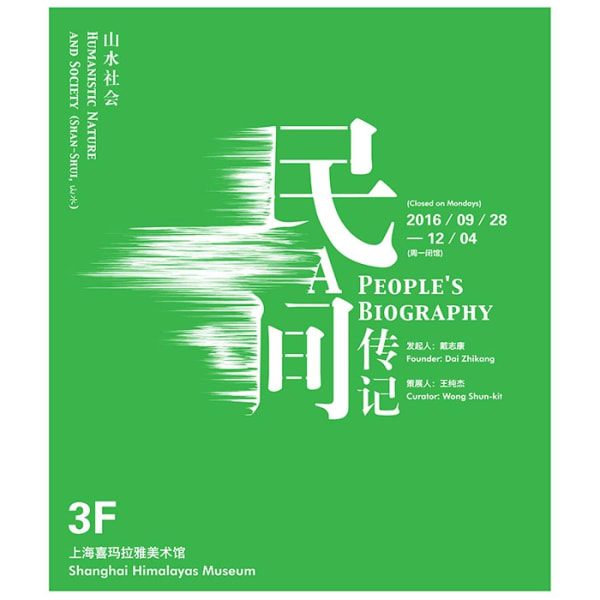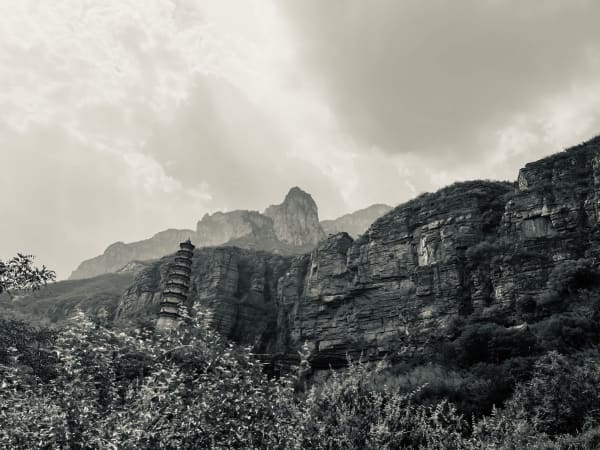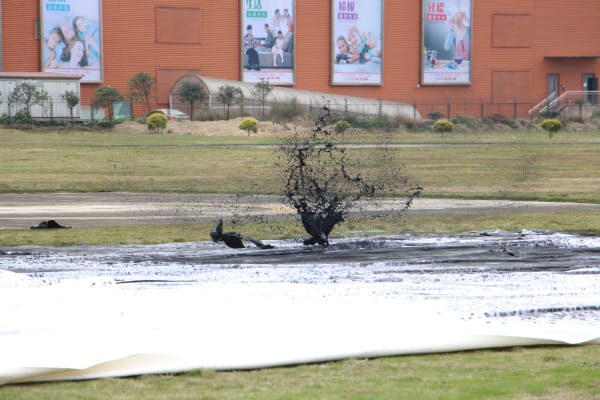b. 1975, lives and works in Beijing
An artist, architectural designer, curator, cultural critic, and social activist, Bingyi (b. 1975, Beijing) has developed a multi-faceted practice that encompasses land and environmental art, site-specific architectural installation, musical and literary composition, ink painting, performance art, and filmmaking. Adopting a non-anthropocentric perspective and channeling nature’s creative agency, her work is centrally concerned with the themes of ecology, ruins, rebirth, and poetic imagination. After pursuing university-level studies in biomedical and electronic engineering in the United States, Bingyi earned a Ph.D. in Art History and Archeology from Yale University in 2005 with a dissertation on the art of the Han Dynasty.
In her large-scale ink paintings, Bingyi uses ink as "dark light" —carbon, an absolute absorber of light, in water, nature's universal translucent solvent—to illuminate the usually invisible and transient physical processes that enable ordered patterns and forms to arise from chaos. Over months or even years, she collaborates with the environmental conditions of a specific site to capture a reality-scaled record of the climatic and topological forces shaping a natural or urban landscape. She then uses installation and performance to recuperate these forces in the live embodied experience of the viewer.
In October 2013, she occupied the center of Toronto's city hall to create a 1,800 square meter ink painting over the course of a twelve-hour outdoor public performance entitled Metamorphosis: To the Non-earthlings. Less than three months later, she created Epoché, a huge public performance and installation commissioned by the Shenzhen Bao'an International Airport. Working with the conditions of suspension, gravity, land, and wind, she bombarded an airfield with 20-kilogram oil-and-ink "missiles"—500 kilograms of material in total—at different heights from a helicopter. The resultant monumental canvas, a record of the performance and event, was hung centrally in the airport for a month. Nicknamed modan or "ink bomb," the piece became an internet sensation.
In her March 2015 solo show at Ink Studio, she created a two-floor immersive environment with her massive 2013 work Wanwu. Wanwu is the most recent in her series of land and weather works created at sacred mountain sites in China that register the effects of wind, sun, humidity, air pressure, and terrain with ink and water on bespoke xuan paper. Installed again in a different manner for the Encounters public program of Art Basel Hong Kong 2016, Wanwu was a highlight of the art fair and was centrally featured in a variety of media outlets, including being selected as one of the top fifteen booths by Artsy. Recently, Bingyi has extended her nature paintings to incorporate the agencies of ice and sound waves.
At the other end of her practice, Bingyi explores the microscopic origins of organic life in intimate, small-format paintings, in which her minute and meticulous brushwork paradoxically reveals a profoundly creative, gestural, and "calligraphically expressive" quality drawn from her daily calligraphy routine. Through her hypnotic, obsessive endurance and execution both painstaking and nuanced, one senses the loving power of nature itself as it crafts animate life from inanimate matter. Her encyclopedic series Fairies are "catalogues" of the endless virtual forms assumed by organismic life, each with an associated personal anecdote or poetic fantasy.
In recent years, she has turned her attention to film-making. Part of a larger project documenting the disappearance of Beijing hutong, her narrative film trilogy Ruins will premier at the Los Angeles County Museum of Art and Ullens Center for Contemporary Art in spring 2019.
Bingyi has exhibited internationally at the Philadelphia Museum of Art (2022-2023), Art Basel Hong Kong Encounters (2022, 2017), Los Angeles County Museum of Art (2021), the Brooklyn Museum (2019) the National Art Museum of China (2017), Shanghai Museum of Contemporary Art (2016); Istanbul Modern (2016); Museo de Arte Contemporaneo de Alicante, Alicante, Spain (2014), St. Johannes-Evangelist-Kirche, Berlin, Germany (2012), Smart Museum of Art, University of Chicago, Chicago, USA (2010), Galerie Erna Hecey, Brussels, Belgium (2009), Contrasts Gallery, Shanghai, China (2009), and Max Protetch Gallery, New York, USA (2008). Her works have also been included in Surveyors, Albright-Knox Art Gallery, Buffalo, USA (2011), and Yipai, the Opening of the New Wing, Today Art Museum, Beijing, China (2009), and featured at The 7th Gwangju Biennale, Annual Report: A Year in Exhibitions, Gwangju, South Korea (2008).
Bingyi's works can be found in the Los Angeles County Museum of Art, Los Angeles, USA; White Rabbit Contemporary Chinese Art Collection, Sydney, Australia; and the collections, among others, of, the Smart Museum of Art, University of Chicago, Chicago, USA; Museo de Arte Contemporaneo de Alicante, Alicante, Spain; and Museum of Chinese Women and Children, Beijing, China. She has been the subject of three documentaries: The Enduring Passion for Ink—A Series on Contemporary Ink Painters: Bingyi's Madness, on Bingyi's process as an ink painter, filmed by Richard Widmer and directed by Britta Erickson; Shape of the Wind, on Bingyi's land and weather art, and Epoché, on Bingyi's Shenzhen airport performance/event, both filmed and edited by Richard Widmer.
To: Artist's website
-
 Waterfall of Plum Blossoms 梅瀑, 2019
Waterfall of Plum Blossoms 梅瀑, 2019 -
 Picture of the Cave of Mind 洞心图, 2018-2019
Picture of the Cave of Mind 洞心图, 2018-2019 -
 Life and Death 生死波相, 2018
Life and Death 生死波相, 2018 -
 Ocean Star 海洋之星, 2018
Ocean Star 海洋之星, 2018 -
 Starry Sky 星空, 2018
Starry Sky 星空, 2018 -
 Fairy of Illusion 幻妖, 2012-2016
Fairy of Illusion 幻妖, 2012-2016 -
 Apocalypse 囙:千里江山, 2011-2015
Apocalypse 囙:千里江山, 2011-2015 -
 Sunflowers with Three Faces 三张脸的向日葵, 2010
Sunflowers with Three Faces 三张脸的向日葵, 2010 -
 The Seal of Muhamudra V 大手印之五, 2015
The Seal of Muhamudra V 大手印之五, 2015 -
 Sonic Painting Series (4) 《声音绘画》系列(4), 2016
Sonic Painting Series (4) 《声音绘画》系列(4), 2016 -
 Souls of Flowers Emerging from a Lake 花魂鹤影 , 2016
Souls of Flowers Emerging from a Lake 花魂鹤影 , 2016 -
 ICE Paintings: Lotus Blossom in Ice No.1 冰画:莲1号, 2016
ICE Paintings: Lotus Blossom in Ice No.1 冰画:莲1号, 2016 -
 Fairy of Mind 思妖, 2012-2016
Fairy of Mind 思妖, 2012-2016 -
 Fairy of Tail 尾妖 , 2012-2016
Fairy of Tail 尾妖 , 2012-2016 -
 Fairy of Blossom 花妖, 2012-2016
Fairy of Blossom 花妖, 2012-2016 -
 瀮, 2013-2014
瀮, 2013-2014 -
 波, 2013-2014
波, 2013-2014 -
 渙, 2015
渙, 2015
-

Bingyi: The Eyes of Chaos
18 Nov 2023 - 28 Apr 2024INKstudio is proud to announce the opening of Bingyi’s third solo exhibition at the gallery entitled “Bingyi: The Eyes of Chaos.”Read more -

Taipei | Contemporary Ink, Global context
Bingyi, Jeong Gwang Hee, Li Huasheng, Jennifer Wen Ma, Wang Tiande, Yang Jiechang, Zheng Chonbin 18 - 24 Oct 2023Virtual Exhibition INKstudio is delighted to present the exhibition 'Global Ink, Contemporary Contexts' in Taipei. INKstudio selected seven artists based in various regions across continents, including Western Europe, the United...Read more -

Global INK: INKstudio’s Ten Year Anniversary Exhibition
Bingyi, Chen Haiyan, Huang Chih-yang, Li Jin, Li Huasheng, Liu Dan, Peng Kang-long, Wang Dongling, Wang Tiande, Xu Bing, Yang Jiechang, Zheng Chongbin 17 Jun - 29 Jul 2023The current exhibition, Global INK, is our opportunity to share with everyone what we have discovered over our first decade of programming. It is not a group show but instead a special exhibition consisting of twelve separate solo presentations by twelve artists who we believe define the new global contemporary INK.Read more -

New York | Bingyi: Land of Immortals
14 - 26 Mar 2022Los Angeles-based artist, writer, film-maker, curator, cultural critic, and social activist Bingyi (b. 1975, Beijing) will premier Land of Immortals a new body of contemporary ink painting in a joint exhibition between INKstudio (Beijing) and Joan B. Mirviss (New York) during Asia Week New York 2022. Bingyi’s contemporary ink paintings will be shown alongside the contemporary ceramics of master artist Kondō Takahiro (b. 1958, Kyoto) in his concurrent solo exhibition Kondō Takahiro: Making Waves.Read more -

Impossible Landscapes
Bingyi 13 Oct 2018 - 6 Jan 2019INK studio is honored to present Bingyi’s second solo exhibition at our Beijing gallery Bingyi: Impossible Landscapes. An artist, architectural designer, curator, cultural critic, and social activist, Bingyi (b. 1975,...Read more -

Ink and the Mind
Ink and phenomenology. Exhibition No.2 19 Mar - 12 May 2016Ink and the Mind explores the myriad connections between ink painting and cognition, perception, affect, and imagination.Read more -

INTENSIVE/EXTENSIVE
BINGYI 21 Mar - 3 May 2015Ink Studio is pleased to announce the opening of Bingyi's first major solo exhibition in China Intensive/Extensive on March 21, 2015.Read more
-
Exhibition | Summoning Memories: Art Beyond Chinese Traditions, Asia Society Texas Center
Bingyi, Jennifer MA Wen, Liu Dan, Tao Aimin, Wang Tiande, Xu Bing, Zheng Chongbin May 10, 2023Summoning Memories: Art Beyond Chinese Traditions Date: 10 February - 2 July 2023 Venue: Asia Society Texas Center, Houston, Texas, US Curated by Susan L....Read more -

Exhibition | Bingyi at Philadelphia Museusm of Art
November 19, 2022Oneness: Nature & Connectivity in Chinese Art 2022.7.30-2023.10.29 Philadelphia Museusm of Art Explore the questions of “what is nature?” and “what is the relationship between...Read more -

Exhibition | Bingyi, Liu Dan at "Ink/stone", Fairfield University Art Museum
April 9, 2022Ink/stone January 21 - March 5, 2022 virtual presentation still on view Fairfield University Art Museum Walsh Gallery At the time of growing academic interest...Read more -

Exhibition | Bingyi: Land of Immortals (New York)
An exhibition sponsored by INKstudio at Joan B Mirviss LTD during Asia Week New York 2022 March 11, 2022March 14–26, 2022 Joan B Mirviss LTD 39 E 78th St Suite 401 New York, NY 10075 Inquires: yee.craig@inkstudio.com.cn (EN) chu.nancy@inkstudio.com.cn (CN) Performance March 23,...Read more -

Exhibition | CHINA NOW: NEW LITERATI ART (New York's Asia Week)
March 1, 2017INK studio, the critically-acclaimed Beijing-based art gallery, is pleased to announce China Now: New Literati Art , its inaugural group exhibition in the United States....Read more -

Exhibition | Humanistic Nature and Society (Shan – Shui 山水) – A People’s Biography (Shanghai Himalayas Museum)
November 16, 2016Bingyi's monumental scroll painting Apocalypse (2011-2015) is on view at Shanghai Himalayas Museum, September 28 – December 4, 2016. Entitled Humanistic Nature and Society (Shan...Read more -

Exhibition | Till It's Gone (Istanbul Museum of Modern Art)
December 29, 2015Bingyi's monumental scroll painting Apocalypse (2011-2015) will be featured at the Istanbul Museum of Modern Art as part of Till It's Gone , a group...Read more -

EXHIBITION | Extension of Bingyi: Intensive/Extensive at Ink Studio, Beijing
April 22, 2015Since opening at Ink Studio on March 21, 2015, Bingyi's first major solo exhibition in China, 'Intensive/Extensive,' has been met with tremendous enthusiasm from artists,...Read more
-
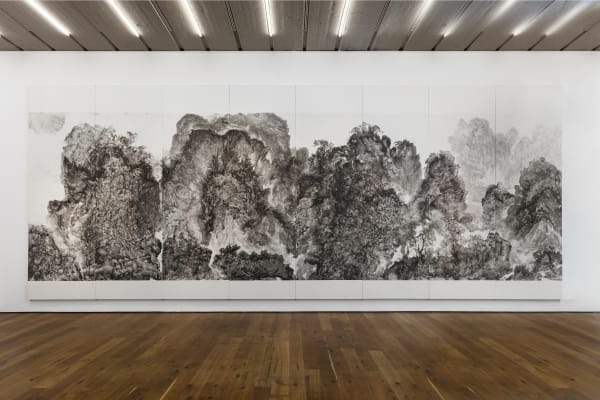
Bingyi: The Eyes of Chaos
December 21, 2023Read more -

2023 Gallery Weekend Beijing | Global INK: INKstudio’s Ten Year Anniversary Exhibition
June 30, 2023Read more -
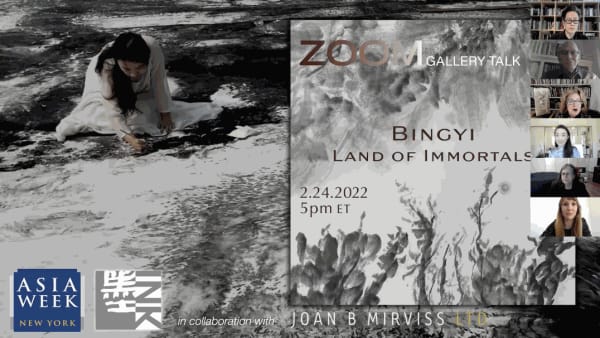
Webinar Recording | Bingyi: Land of Immortals
March 12, 2022On Thursday, Feburary 24th in Eastern time, INKstudio (Beijing) and Joan B. Mirviss LTD (New York) co-hosted “Bingyi: Land of Immortals,” a webinar as part...Read more -

Bingyi: Ruins Trailer
November 1, 2018INKstudio is honored to present Bingyi’s second solo exhibition at our Beijing gallery Bingyi: Impossible Landscapes. An artist, architectural designer, curator, cultural critic, and social...Read more -
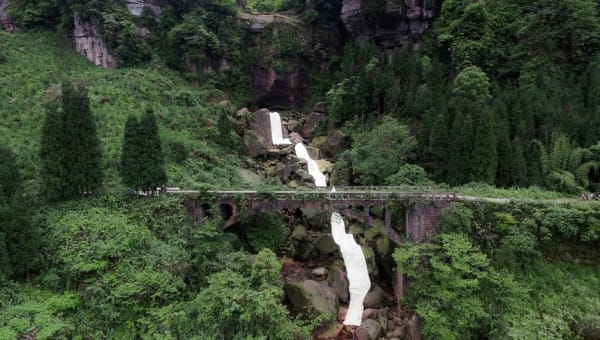
Bingyi: Emei Waterfall
November 1, 2018INKstudio is honored to present Bingyi’s second solo exhibition at our Beijing gallery Bingyi: Impossible Landscapes. An artist, architectural designer, curator, cultural critic, and social...Read more -

Bingyi, He Yunchang, and Nataline Colonnello on CCTV News
February 15, 2017INK studio Director Nataline Colonnello and artist Bingyi discuss contemporary Chinese art in the March 12, 2016 episode of the CCTV News program 'Crossover.' He...Read more -

Bingyi: Shape of the Wind
February 14, 2017An excerpt from Fuchun by Bingyi and Rick Widmer. With special thanks to filmmaker Rick Widmer.Read more -

The Enduring Passion for Ink: A Project on Contemporary Ink Painters
Britta Erickson February 7, 2017The Enduring Passion for Ink: A Project on Contemporary Ink Painters (or the 'Project') is a proposed exhibition, book, and film series designed to introduce...Read more -

Bingyi's Apocalypse
January 17, 2016Bingyi's monumental scroll painting Apocalypse (2011-2015) featuring at the Istanbul Museum of Modern Art as part of Till It's Gone , a group show on...Read more -
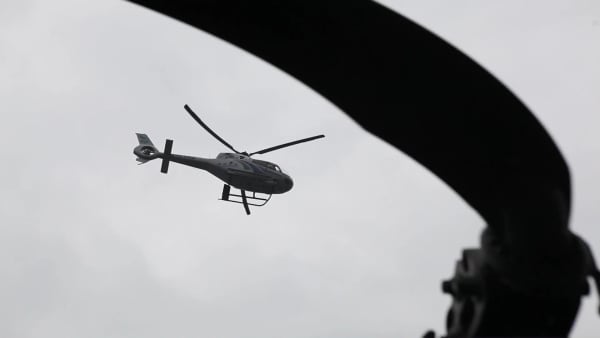
Bingyi: Epoché
June 17, 2015A video documentary about Epoché, Bingyi's performance and installation at the Shenzhen Bao'an International Airport, November, 2014, excerpted from a longer work by Rick Widmer.Read more
-

Seeking the Truth of Chaos
Gao Minglu -

Taihang Rhapsody
Bingyi -

“Alternative Histories”: Bingyi’s language of ink
Dr. Luise Guest, Ran Dian 燃点, February 18, 2023 -

An interview report from ArtAlpha艺术阿尔法 about Bingyi
Bingyi, Wang Hui, March 31, 2022 -
Seeing the Unseen World: The Art of Bingyi
Amjad Majid -

Bingyi: Apocalypse
-

Painting is a flood and a wild beast
Bingyi -

The Metamorphosis of Water: Bingyi's Cascade
WEI XING -

Unknown Parameters
GAO MINGLU

